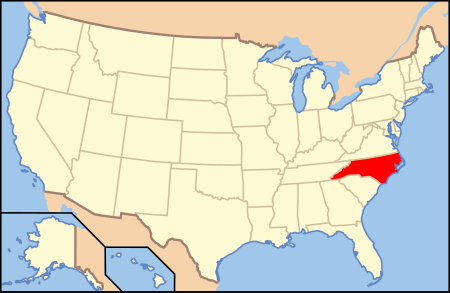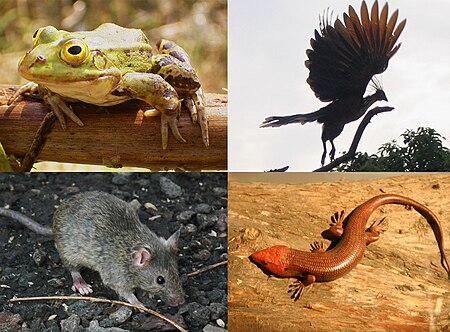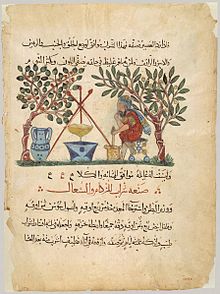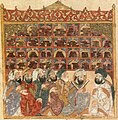Baghdad School
| |||||||||||||
Read other articles:

American publisher (1755–1831) Nathaniel Willis (1755–1831) was a publisher and editor in the late 18th century. He participated in the Boston Tea Party in 1773. He issued the Independent Chronicle (1776–1784) and the American Herald in Boston, Massachusetts,[1] and worked for some years with Edward Eveleth Powars as Powars & Willis. The Independent Chronicle and the Universal Advertiser, Boston, printed by Nathaniel Willis, opposite the court-house, Queen Street, Boston, 1780 …

الدَّولَةُ الزِّنكِيَّةُ الدولة الأتابكيَّة - الإمارة الزنكيَّة 1127 – 1250 السَّواد، وهو شعارُ بني العبَّاس في بغداد،[1] اتخذه الزنكيُّون رايةً لِلدلالة على تبعيَّتهم لِلخلافة العبَّاسيَّة الدولة الزنكيَّة في أقصى امتدادها في عهد الملك العادل نور الدين�…

Halaman ini berisi artikel tentang salah satu kelompok bangsa Turk. Untuk kegunaan lain, lihat Oghuz. Negara Oguz Yabgu di Kazakhstan, 750-1055 Oghuz, Oguz atau Ghuzz Turk adalah sebuah bangsa Turk barat yang berbicara dengan bahasa Oghuz dari subdivisi umum dari rumpun bahasa Turkik.[1] Pada abad ke-8, mereka membentuk konfederasi suku yang secara konvensional dinamakan Negara Oghuz Yabgu di Asia tengah. Nama Oghuz adalah sebuah kata Bahasa Turki yang umum untuk suku. Sumber-sumber Biza…

American basketball player (born 1965) Mitch RichmondRichmond in 2010Personal informationBorn (1965-06-30) June 30, 1965 (age 58)Fort Lauderdale, Florida, U.S.Listed height6 ft 5 in (1.96 m)Listed weight220 lb (100 kg)Career informationHigh schoolBoyd Anderson(Lauderdale Lakes, Florida)College Moberly Area CC (1984–1986) Kansas State (1986–1988) NBA draft1988: 1st round, 5th overall pickSelected by the Golden State WarriorsPlaying career1988–2002PositionShooti…

American football and baseball player (born 1962) Not to be confused with Boo Jackson. Bo JacksonJackson in 2011Born (1962-11-30) November 30, 1962 (age 61)Bessemer, Alabama, U.S.American football player American football careerNo. 34Position:Running backPersonal informationHeight:6 ft 1 in (1.85 m)Weight:230 lb (104 kg)Career informationHigh school:McAdory (McCalla, Alabama)College:Auburn (1982–1985)NFL draft:1986 / Round: 1 / Pick: 1[a …

North Carolina's gun law Location of North Carolina in the United States Gun laws in North Carolina regulate the sale, possession, and use of firearms and ammunition in the U.S. state of North Carolina.[1][2] North Carolina is a permissive state for firearms ownership. The state maintains concealed carry reciprocity with any other state so long as the permit is valid.[3] Summary table Subject / law Long guns Handguns Relevant statutes Notes State permit required to p…

Come leggere il tassoboxTetrapodi Rappresentanti dei gruppi esistenti di tetrapoda, (in senso orario dall'alto verso il basso): una rana (genere Pelophylax, un lissamphibio), un'hoatzin, uno scinco (due sauropsidi), e un topo (un sinapside) Classificazione scientifica Dominio Eukaryota Regno Animalia Phylum Chordata (clado) Craniata Subphylum Vertebrata Infraphylum Gnathostomata Clado Eugnathostomata Clado Teleostomi Superclasse Tetrapoda Gaffney, 1930 Sottogruppi Batrachomorpha / Amphibia Lissa…

此條目可参照英語維基百科相應條目来扩充。 (2021年5月6日)若您熟悉来源语言和主题,请协助参考外语维基百科扩充条目。请勿直接提交机械翻译,也不要翻译不可靠、低品质内容。依版权协议,译文需在编辑摘要注明来源,或于讨论页顶部标记{{Translated page}}标签。 约翰斯顿环礁Kalama Atoll 美國本土外小島嶼 Johnston Atoll 旗幟颂歌:《星條旗》The Star-Spangled Banner約翰斯頓環礁地�…

此條目介紹的是来自威斯康星州的美国参议员(1947–57)。关于其他叫麦卡锡的人,请见「麦卡锡」。 本條目存在以下問題,請協助改善本條目或在討論頁針對議題發表看法。 此條目需要补充更多来源。 (2018年11月7日)请协助補充多方面可靠来源以改善这篇条目,无法查证的内容可能會因為异议提出而被移除。致使用者:请搜索一下条目的标题(来源搜索:约瑟夫·雷蒙�…

artikel ini perlu dirapikan agar memenuhi standar Wikipedia. Tidak ada alasan yang diberikan. Silakan kembangkan artikel ini semampu Anda. Merapikan artikel dapat dilakukan dengan wikifikasi atau membagi artikel ke paragraf-paragraf. Jika sudah dirapikan, silakan hapus templat ini. (Pelajari cara dan kapan saatnya untuk menghapus pesan templat ini) Pelabuhan Internasional PanjangPelabuhan Panjang pada 2016LokasiNegara IndonesiaLokasiBandar Lampung, LampungKoordinat5°28′07.9″S 105°19′11.0…

Culinary traditions of Iraq Part of a series on theCulture of Iraq History People Languages Cuisine Religion Art Literature Music Media Radio Television Cinema Sport Monuments World Heritage Sites Symbols Flag Coat of arms National anthem Iraq portalvte Iraqi cuisine is a Middle Eastern cuisine that has its origins in the ancient Near East culture of the fertile crescent.[1][2][3] Tablets found in ancient ruins in Iraq show recipes prepared in the temples during…

State church of Tuvalu Te Ekalesia Kelesiano TuvaluClassificationProtestantOrientationCalvinistPolityCongregationalAssociations Boys' Brigade International Fellowship,[1] Council for World Mission World Association for Christian Communication World Communion of Reformed Churches[2] Pacific Conference of Churches World Council of Churches RegionTuvaluHeadquartersFunafutiFounderElekanaOrigin1861Separated fromLondon Missionary Society, Christian Congregational Church of SamoaCongreg…

الحرب الكردية العراقية الثانية جزء من النزاع العراقي الكردي الرئيس الجزائري هواري بومدين يتوسط كل من نائب الرئيس العراقي آنذاك صدام حسين وشاه إيران محمد رضا بهلوي في الجزائر عام 1975 معلومات عامة التاريخ 16 أبريل 1974 - 25 مارس 1975 الموقع كردستان العراق النتيجة انتصار العراق…

German politician (born 1959) Klaus RiegertMember of the Bundestag from GöppingenIn office1992–2013[1]Preceded byLutz StavenhagenSucceeded byHermann Färber Personal detailsBorn (1959-02-26) 26 February 1959 (age 65)Süßen, Göppingen, West GermanyPolitical partyCDUAwardsGerman Order of Merit (2008)[2] Klaus Riegert (born 26 February 1959 in Süßen, Göppingen) is a German politician (CDU). Until 2013, he was deputy chairman of the Subcommittee on Civic Involvement of t…

Soviet lunar probe launched in 1959 Luna 3A 1:1 scale model at the Memorial Museum of Cosmonautics in MoscowMission typeLunar flyby[1]OperatorSoviet space programHarvard designation1959 Theta 1[2]COSPAR ID1959-008A SATCAT no.21Mission duration18 days (launch day to last contact day)Orbits completed14 Spacecraft propertiesSpacecraftYe-2A No.1[1]ManufacturerOKB-1Launch mass278.5 kilograms (614 lb)[1] Start of missionLaunch date4 October 1959, 00:43:40 (195…

Sungai Simpang TanggaSungai Simpang TanggaLokasi mulut sungaiTampilkan peta KalimantanSungai Simpang Tangga (Indonesia)Tampilkan peta IndonesiaLokasiNegaraIndonesiaProvinsiKalimantan SelatanKotaBanjarmasinCiri-ciri fisikHulu sungai - lokasiKalimantan Sungai Simpang Tangga adalah sungai yang mengalir di kota Banjarmasin, Kalimantan Selatan, Indonesia. Geografi Sungai ini mengalir di kecamatan Banjarmasin Utara.[1] Sungai Simpang Tangga memiliki panjang 723,371 m dengan leb…

بلاد الشام فلسطين الثانية مقاطعة بيزنطية 390 – 636 خارطة لمقاطعة فلسطين الثانية ضمن الأبرشية المشرقية. عاصمة سكيثوبوليس نظام الحكم غير محدّد اللغة قائمة اللغة الرسمية والأساسية: اللاتينية واليونانية بالإضافة إلى: العربية والآرامية والعبرية الديانة المسيحية والسامرية �…

Indian newspaper For the Bangladesh newspaper, see The Sangbad. Dainik SambadTypeDailyFormatBroadsheetPublisherBhupendra Chandra Datta Bhowmik TrustFounded1971Political alignmentCenter-LeftLanguageBengaliCityAgartala, TripuraCountryIndiaWebsitehttp://www.dainiksambad.net/Free online archiveswww.dainiksambad.netMedia of IndiaList of newspapers Dainik Sambad (Bengali: দৈনিক সংবাদ) is a Bengali daily newspaper published from Agartala, the capital of the Indian state of Tripura. …

Scottish football player and manager (1934–2015) For other people named Dave Mackay, see David McKay. Dave Mackay Mackay in 2006Personal informationFull name David Craig Mackay[1]Date of birth (1934-11-14)14 November 1934Place of birth Edinburgh, ScotlandDate of death 2 March 2015(2015-03-02) (aged 80)Place of death Nottingham, EnglandHeight 5 ft 8 in (1.73 m)[2][3][4]Position(s) Left-half / SweeperSenior career*Years Team Apps (Gls)1953–19…

Indische Sociaal-Democratische Vereeniging Perhimpunan Demokrat Sosial HindiaKetua umumHenk SneevlietPendiriHenk Sneevliet (Ketua)Adolf BaarsC. HartoghH.W. DekkerBernard CoosterDibentuk09 Mei 1914 (1914-05-09)Dibubarkan23 Mei 1920Diteruskan olehPKIKantor pusatSurabayaSemarangSurat kabarHet Vrije WoordSayap BuruhPorojitnoPKBTSayap PribumiSama Rata Hindia BergerakIdeologiSosialismeMarxisme-LeninismeKomunismeAntikapitalismeAfiliasi internasionalSDAPWarnaMerah Indische Sociaal Democratisch…












